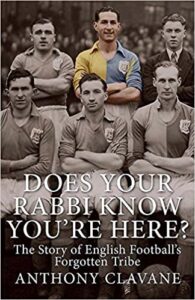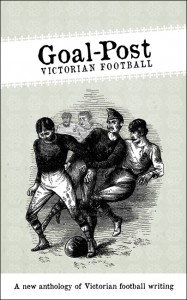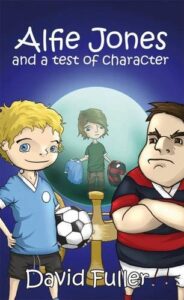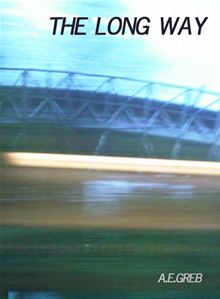Book Review: Barclay Boy: Season in the Sun by James Scoltock
 “My name’s James Scoltock, I’m a football fan and so very happily one dimensional” declares the author in his review of a dramatic 12 months for his club, Norwich City.
“My name’s James Scoltock, I’m a football fan and so very happily one dimensional” declares the author in his review of a dramatic 12 months for his club, Norwich City.
The 12 months in question are from May 2011 to May 2012 covering the final stages of Norwich’s promotion to the Premier League and their subsequent season in the top flight of English football. I worry that, although this may limit its appeal to fans of Norwich City, there are nevertheless few references to the club’s past and little that is enlightening about the club itself, however it is undoubtedly a passionate and personal view of a significant period of time in the footballing fortunes of the author’s team.
“I have my own favourite moment from the 2011-12 season. Grant Holt winning a free-kick from Laurent Koscielny in the centre-circle at Arsenal. The red majority of 60,000 supporters were up in arms, pouring their vitriol all over the City skipper who stood there, arms outstretched in a nonchalant gesture of innocence. It was the same gesture, the same vitriol City fans had seen from 4,000 supporters at Yeovil and 4,500 fans at Scunthorpe. And now it was happening at Arsenal”. Such an experience; not a result nor a goal, but a sudden realisation that your club’s place in the world has changed will resonate with all football fans. This is from the Foreword and unfortunately such genuinely astute footballing observations are never captured with the same clarity within the book itself.
Where the book succeeds is that it gives an insight into how a football fan’s time can be filled between games and in the close-season; worrying about the last game, worrying about the next game, worrying about who might be leaving or joining and what is being said about the club. And having read the book you will be familiar with much of what was said about the club; there are many transcripts of chat-room conversations and match reviews from nether regions of the internet, as well as more mainstream media content.
Diversions into topics such as Colitis, visits to Japanese football matches and attempts to star in an ESPN trailer for his club add a layer of interest yet, although these elevate it to more than a standard review of the season, surprisingly they give the reader little insight into the author or his character.
It’s an honest and occasionally amusing book with a scattering of typically football-esque mangled clichés such as “hammer in the coffin” and it captures a fan’s experience of a dramatic 12 months for Norwich City. The fan lives in London, doesn’t get to all the games and supported Liverpool until 2004. That may or may not pique the interest of Norwich supporters who are looking for a book to help them re-live the experience of promotion to the top tier of English football and their relatively successful first season amongst the country’s top teams.
Paul Gowland
 When I was growing up, the football book market was pretty much restricted to lazy and often ‘ghosted’ biographies, where ‘the boys done good’ mentality was about as incisive as it got. Thankfully, as the early 1990’s emerged this changed, with books such as “Fever Pitch” by Nick Hornby paving the way for a better expression of the fan experience and the beautiful game in a wider context. Following in this vein Anthony Clavane wrote the Award winning “Promised Land: A Northern Love Story”, which tells the tale of the rise and fall of Leeds United, intertwined with that of the City of Leeds and of the Jewish community.
When I was growing up, the football book market was pretty much restricted to lazy and often ‘ghosted’ biographies, where ‘the boys done good’ mentality was about as incisive as it got. Thankfully, as the early 1990’s emerged this changed, with books such as “Fever Pitch” by Nick Hornby paving the way for a better expression of the fan experience and the beautiful game in a wider context. Following in this vein Anthony Clavane wrote the Award winning “Promised Land: A Northern Love Story”, which tells the tale of the rise and fall of Leeds United, intertwined with that of the City of Leeds and of the Jewish community. “This is a time of unprecedented uncertainty and disaffection in Scottish football, from the top of the game to the bottom…The extreme financial challenges facing Rangers and other SPL clubs, poor performances by Scottish clubs in Europe and the failure of the national team to reach the finals of a major competition since 1998, all add to a generally held feeling fuelled by an increasingly restive media, that the game has sunk to its lowest level in living memory.” This statement was made by outgoing Dundee FC chairman Bob Brannan in an open letter to the fans of the club in June 2010 and appears in the book titled “It’s All About The Memories” by Jacqui Robertson and Kenny Ross. This was a highly prophetic statement as in September 2010, Dundee FC entered administration and in the summer of 2012, Rangers were liquidated. To add a further twist to the tale, it was Dundee FC who took Rangers place in the Scottish Premier League this season after finishing runners up in the First Division in 2011/12.
“This is a time of unprecedented uncertainty and disaffection in Scottish football, from the top of the game to the bottom…The extreme financial challenges facing Rangers and other SPL clubs, poor performances by Scottish clubs in Europe and the failure of the national team to reach the finals of a major competition since 1998, all add to a generally held feeling fuelled by an increasingly restive media, that the game has sunk to its lowest level in living memory.” This statement was made by outgoing Dundee FC chairman Bob Brannan in an open letter to the fans of the club in June 2010 and appears in the book titled “It’s All About The Memories” by Jacqui Robertson and Kenny Ross. This was a highly prophetic statement as in September 2010, Dundee FC entered administration and in the summer of 2012, Rangers were liquidated. To add a further twist to the tale, it was Dundee FC who took Rangers place in the Scottish Premier League this season after finishing runners up in the First Division in 2011/12. What we come to understand today as the game of football, played and watched by millions across the world, began its real development in England during the Victorian era. This collection of writing edited by Paul Brown is drawn from library archives from such long-lost newspapers and periodicals as, Every Boy’s Magazine, The Dart and Chums, from 1863 through to 1900. It covers reports of games (including England v Scotland, 1872), articles from leading figures (such as, C.W.Alcock) and broaches topics such as “Association Football in Scotland”
What we come to understand today as the game of football, played and watched by millions across the world, began its real development in England during the Victorian era. This collection of writing edited by Paul Brown is drawn from library archives from such long-lost newspapers and periodicals as, Every Boy’s Magazine, The Dart and Chums, from 1863 through to 1900. It covers reports of games (including England v Scotland, 1872), articles from leading figures (such as, C.W.Alcock) and broaches topics such as “Association Football in Scotland” This is the second book in the “Alfie Jones” series (
This is the second book in the “Alfie Jones” series ( Having read the book and then attempting to write this review, I must admit I was unsure where to start. This was not because this isn’t a good read, but that the book covers so much ground, in so many styles and elicits so many emotions.
Having read the book and then attempting to write this review, I must admit I was unsure where to start. This was not because this isn’t a good read, but that the book covers so much ground, in so many styles and elicits so many emotions. This eBook (from Division Four Publishing), takes its title from the defining moment in the 1991/92 Third Division Play-Off Final at Wembley between Peterborough United and Stockport County. On a scorching day in May, it proved to be dramatic ninety minutes. After a goalless first-half, the game sparked into life on 51 minutes when from a corner, Ken Charlery had a header which hit the underside of the bar and bounced down. Stockport protested, but the goal stood to give the Posh a controversial 1-0 lead. With the heat draining their energy and players looking tired, the game entered the closing minutes. Then, Stockport broke away on 87 minutes and a cross-shot was parried by Peterborough keeper Barber, which fell kindly to Kevin Francis who had the easiest of headers to level the score. Suddenly the prospect of extra-time loomed, however with 89 minutes on the clock, Marcus Ebdon launched a perfect ball forward, Ken Charlery headed it on, burst past the defender into the box, before coolly slotting over the County keeper. In such moments legends are created.
This eBook (from Division Four Publishing), takes its title from the defining moment in the 1991/92 Third Division Play-Off Final at Wembley between Peterborough United and Stockport County. On a scorching day in May, it proved to be dramatic ninety minutes. After a goalless first-half, the game sparked into life on 51 minutes when from a corner, Ken Charlery had a header which hit the underside of the bar and bounced down. Stockport protested, but the goal stood to give the Posh a controversial 1-0 lead. With the heat draining their energy and players looking tired, the game entered the closing minutes. Then, Stockport broke away on 87 minutes and a cross-shot was parried by Peterborough keeper Barber, which fell kindly to Kevin Francis who had the easiest of headers to level the score. Suddenly the prospect of extra-time loomed, however with 89 minutes on the clock, Marcus Ebdon launched a perfect ball forward, Ken Charlery headed it on, burst past the defender into the box, before coolly slotting over the County keeper. In such moments legends are created. This was a new experience for me, as it was the first time I had read an eBook. My initial conclusion is that I’m not a fan of the technology. It feels a cold experience and was too much like reading documentation for work. Perhaps over time, if I read more books in this way then my opinion may change, but for now, give this old-timer a ‘real’ book in all its many paged glory. Despite my reticence towards eBooks, I want to say that in no way did it affect the way I approached reviewing The Long Way by A.E.Greb (
This was a new experience for me, as it was the first time I had read an eBook. My initial conclusion is that I’m not a fan of the technology. It feels a cold experience and was too much like reading documentation for work. Perhaps over time, if I read more books in this way then my opinion may change, but for now, give this old-timer a ‘real’ book in all its many paged glory. Despite my reticence towards eBooks, I want to say that in no way did it affect the way I approached reviewing The Long Way by A.E.Greb ( One Northern Soul was first published in 2002 featuring the character Steven Bottomley and whose story is continued in the 2005 sequel, No More Heroes.
One Northern Soul was first published in 2002 featuring the character Steven Bottomley and whose story is continued in the 2005 sequel, No More Heroes. Saturday 11 May 1985 should have been a day of celebration at Valley Parade as Bradford City paraded the trophy after winning the 1984/85 Third Division title. Instead it became an occasion of horror, devastation and sadness. Towards the end of the first-half in the game against Lincoln City, a small flame was seen underneath an area of seats, but which in minutes turned the whole stand into an inferno. 56 people lost their lives and hundreds more were injured.
Saturday 11 May 1985 should have been a day of celebration at Valley Parade as Bradford City paraded the trophy after winning the 1984/85 Third Division title. Instead it became an occasion of horror, devastation and sadness. Towards the end of the first-half in the game against Lincoln City, a small flame was seen underneath an area of seats, but which in minutes turned the whole stand into an inferno. 56 people lost their lives and hundreds more were injured.